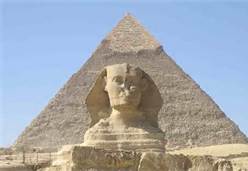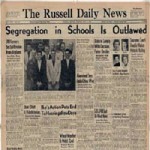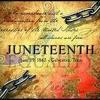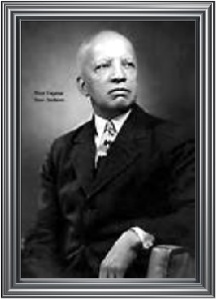
Dorothy Irene Height, (March 24, 1912 – April 20, 2010), the Matriarch of the civil rights movement passed away early Tuesday of natural causes in a Washington hospital. Dr. Height established a national reputation as a graceful insistent voice for civil rights and women's rights. She was regarded as the “Godmother of the Civil Rights Movement” and a tireless crusader for racial justice and gender equality spanned more than six decades.
Dr. Height was born in Richmond, Virginia. She moved with her family to Rankin, Pennsylvania near Pittsburgh early in her life where she attended racially integrated schools. She was admitted to Barnard College in 1929, but upon her arrival she was denied entrance because the school had an unwritten policy of admitting only two black students. She pursued studies instead at New York University earning a degree in 1932 and a master's degree in educational psychology the following year.
Dr. Height served on the advisory council of the White House Initiative on Historically Black Colleges and Universities and the National Advisory Council on Aging. Her awards included 36 honorary doctorates from colleges and universities, including Harvard and Princeton. In addition, Dr. Height was awarded the Presidential Medal of Freedom and on her 92nd birthday, she received the Congressional Gold Medal, the highest decoration Congress can bestow.
Dr. Height was among a coalition of African American leaders who pushed civil rights to the forefront of the American political stage after World War II. She was instrumental, and a key figure, in the struggles for school desegregation, voting rights, employment opportunities and public accommodations in the 1950’s and 1960’s. Dr Height was president of the National Council of Negro Women for 40 years, relinquishing the title at the age of 95.
National Council of Negro Women is a four million member advocacy group consisting of 34 national and 250 community based organizations. It was founded in 1935 by educator Mary McLeod Bethune, who was one of Height's mentors. Dr. Height was a civil rights activist who participated in protests in Harlem during the 1930’s. In the 1940’s, she lobbied first lady Eleanor Roosevelt on behalf of civil rights causes and in the 1950’s she prodded President Dwight D. Eisenhower to move more aggressively on school desegregation issues.
President Obama issued an official statement White House that reads as follows: Dr. Height was "a hero to so many Americans… Dr. Height devoted her life to those struggling for equality . . . witnessing every march and milestone along the way… And even in the final weeks of her life -- a time when anyone else would have enjoyed their well-earned rest Dr. Height continued her fight to make our nation a more open and inclusive place for people of every race, gender, background and faith."
As a young woman, Dr. Height made money through jobs such as ironing entertainer Eddie Cantor's shirts and proofreading Marcus Garvey's newspaper, the Negro World. She went nightclubbing in Harlem with composer W.C. Handy. Dr Height began her professional career as a caseworker for the New York City welfare department. She got her start as a civil rights activist through the Rev. Adam Clayton Powell Sr., pastor of the Abyssinian Baptist Church in Harlem, and from the pastor's son, the Rev. Adam Clayton Powell Jr., who later represented Harlem in the U.S. House of Representatives.
In the 1940’s, Dr. Height came to Washington as chief of the Phyllis Wheatley YWCA branch. She joined the staff of the national YWCA board in 1944 through 1975. She remained on that staff with a variety of responsibilities, including leadership training and interracial and ecumenical education. In 1965, she organized and became the director of the YWCA's Center for Racial Justice, and she held that position until retiring from the YWCA board in 1975.
Dr. Height became national president of the Delta Sigma Theta sorority in 1947holding that position until 1957 when she became the fourth president of the National Council of Negro Women. She was a visiting professor at the Delhi School of Social Work in India, and she directed studies around the world on issues involving human rights.
During the turmoil of the civil rights struggles in the 1960’s, Dr. Height helped orchestrate strategies with major civil rights leaders including the Rev. Martin Luther King Jr., Roy Wilkins, A. Philip Randolph, Whitney Young, James Farmer, Bayard Rustin and John Lewis, who later served as a Democratic member of the U.S. House of Representatives from Georgia. Congressman John Lewis said when Dr. Height announced her retirement as president of the National Council of Negro Women - "At every major effort for social progressive change, Dorothy Height has been there." She was also energetic in her efforts to overcome gender bias, and much of that work predated the women's rights movement.
Dr. Height was the most influential woman at the top levels of civil rights leadership, but she never drew the major media attention that conferred celebrity and instant recognition on some of the other civil rights leaders of her time. In August 1963, Dr. Height was on the platform with King when he delivered his "I have a dream" speech at the Lincoln Memorial. Less than a month later, at King's request, she went to Birmingham, Ala. to minister to the families of four black girls who had died in a church bombing linked to the racial strife that had engulfed the city.
In 1995, Dr. Height was among the few women to speak at the Million Man March on the Mall, which was led by Louis Farrakhan, the chief minister of the Nation of Islam. "I am here because you are here," she declared. Two years later, at 85, she sat at the podium all day in the whipping wind and chill rain at the Million Woman March in Philadelphia.
She would often remark, "Stop worrying about whose name gets in the paper and start doing something about rats, and day care and low wages. . . . We must try to take our task more seriously and ourselves more lightly." She also famously said, "If the times aren't ripe, you have to ripen the times". It was important to dress well she said, "I came up at a time when young women wore hats, and they wore gloves. Too many people in my generation fought for the right for us to be dressed up and not put down."
"She was a dynamic woman with a resilient spirit, who was a role model for women and men of all faiths, races and perspectives. For her, it wasn't about the many years of her life, but what she did with them," said former U.S. Secretary of Labor Alexis M. Herman. Dr. Height is a national treasure who lived life abundantly and for the abundance of others. She will be greatly missed, not only by those of us who knew her well, but by the countless beneficiaries of her enduring legacy.
In my novel “Just a Season”, I talked about a “Dash” that will be place on our final marker between the years of one's birth and death that will represent the whole of a person’s life. I said that to say, this tiny little dash on Dr. Height's marker will not adequately give enough credit for her outstanding life’s work. It should have an inscription that says - “Servant of God, Well Done." And that's my Thought Provoking Perspective...

























